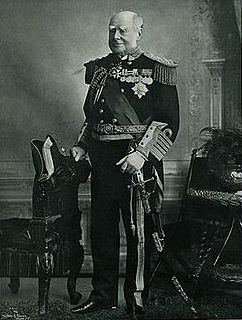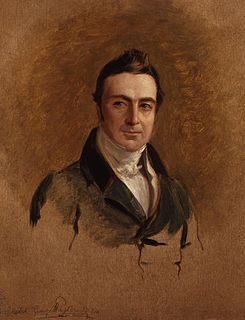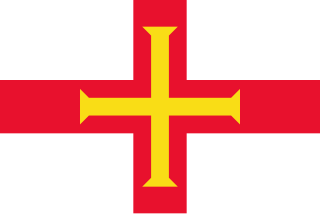
Admiral of the Fleet Sir James Hope, GCB was a Royal Navy officer. As a captain he was present at the Battle of Vuelta de Obligado during the Uruguayan Civil War and then in the Baltic Sea during the Crimean War.

Admiral of the Fleet Sir Henry Keppel was a Royal Navy officer. His first command was largely spent off the coast of Spain, which was then in the midst of the First Carlist War. As commanding officer of the corvette HMS Dido on the East Indies and China Station he was deployed in operations during the First Opium War and in operations against Borneo pirates. He later served as commander of the naval brigade besieging Sebastopol during the Crimean War. After becoming second-in-command of the East Indies and China Station, he commanded the British squadron in the action with Chinese pirates at the Battle of Fatshan Creek when he sank around 100 enemy war-junks. He subsequently took part in the capture of Canton during the Second Opium War.

Admiral of the Fleet Sir William Parker, 1st Baronet, GCB, was a Royal Navy officer. As a captain's servant he took part in the Battle of The Glorious First of June in June 1794 during the French Revolutionary Wars and, as a captain, he participated in the capture of the French ships Marengo and Belle Poule at the Action of 13 March 1806 during the Napoleonic Wars. He was detached on an independent command on the Tagus in September 1831 with a mission to protect British interests during the Portuguese Civil War. As Commander-in-chief of the East Indies and China Station, he provided naval support at various actions between 1841 and 1842 during the First Opium War. Appointed Commander-in-Chief, Mediterranean Fleet in February 1845, he was briefly First Naval Lord in the First Russell ministry from 13 July 1846 to 24 July 1846 but gave up the role due to ill health before returning to his command with the Mediterranean Fleet.

Admiral Sir Anthony Hiley Hoskins, was a Royal Navy officer. As a junior officer, he took part in the Cape Frontier War of 1851 and then saw action at the Battle of Canton in December 1857 and the Battle of Taku Forts in May 1858 during Second Opium War. Once promoted to flag officer rank, he acted as Second-in-Command of the Fleet at the bombardment of Alexandria in July 1882 during the Anglo-Egyptian War. He went on to be First Naval Lord in September 1891 but in that role took a relaxed view of the size of the Fleet and did not see the need for a large shipbuilding effort on the scale envisaged by some of his colleagues, such as Admiral Sir Frederick Richards and Admiral Sir John Fisher who were concerned about French and German naval expansion.

Admiral of the Fleet Sir Frederick William Richards, was a Royal Navy officer. He commanded a paddle-sloop during the Second Opium War in 1860 and, as senior officer on the Cape of Good Hope and West Coast of Africa Station, he landed on the coast of East Africa with a small naval brigade which he led at the Battle of Gingindlovu and the Siege of Eshowe in April 1879 during the Anglo–Zulu War. He took part in the Battle of Laing's Nek in January 1881 during the First Boer War and, as Commander-in-Chief of the East Indies Station, he organized and equipped a naval brigade to support the British advance up the Irrawaddy River in November 1885 during the Third Anglo-Burmese War. He went on to be First Naval Lord and in that role led a huge shipbuilding and naval works programme undertaken in accordance with the provisions of the Naval Defence Act 1889. The programme was opposed by Prime Minister William Gladstone who was concerned about its vast cost and who resigned after a Cabinet defeat over it in March 1894. The programme continued under the Governments of Lord Rosebery and then Lord Salisbury and Richards remained in office driving the programme throughout the political turmoil.

Admiral Sir Sydney Colpoys Dacres was an officer of the Royal Navy who saw service during the Greek War of Independence, when he was involved in an attack on the Turkish forces at Morea, and later during the Crimean War. Born into a substantial naval dynasty during the Napoleonic Wars, he eventually rose to the rank of Admiral and became First Naval Lord. His only significant action as First Naval Lord was to press for the abolition of masts. He went on to be Visitor and Governor of Greenwich Hospital.

Rear-Admiral Richard Charles Mayne CB FRGS was a Royal Navy officer and explorer, who in later life became a Conservative politician.

Sir Richard Vesey Hamilton was a Royal Navy officer. As a junior officer he twice volunteered to take part in missions to search for Sir John Franklin's ill-fated expedition to find the Northwest Passage. He also took part in the Battle of Fatshan Creek in June 1857 during the Second Opium War.

Admiral Sir William Christopher Pakenham, was a senior Royal Navy officer. He served as a British observer with the Imperial Japanese Navy during the Russo-Japanese War; during the First World War he commanded the 2nd Battle Cruiser Squadron at the Battle of Jutland, and from December 1916 was Commander-in-Chief of the Battle Cruiser Fleet.

Rear Admiral Sir Thomas Hounsom Butler Fellowes, KCB (1827–1923) was an officer in the Royal Navy during the Victorian era.
Sir Thomas Bertie RSO, born Thomas Hoar, was an officer of the Royal Navy who served during the American War of Independence and the French Revolutionary and Napoleonic Wars.

Admiral Sir George Elliot was a Royal Navy officer who served during the French Revolutionary and Napoleonic Wars, and the First Opium War.
Thomas Leeke Massie was an officer of the Royal Navy, who rose to the rank of admiral.

Admiral of the Fleet Sir James Elphinstone Erskine was a Royal Navy officer. As a junior officer he served on the North America and West Indies Station. This was a difficult time in relations between the United Kingdom and the United States following the Trent Affair, an international diplomatic incident that occurred during the American Civil War when the United States Navy frigate USS San Jacinto intercepted the British mail packet RMS Trent.
Charles Inglis was an officer of the Royal Navy who saw service during the French Revolutionary and Napoleonic Wars, rising to the rank of post-captain.
Rear-Admiral Edward Sneyd Clay was an officer of the Royal Navy who served during the American War of Independence, and the French Revolutionary and Napoleonic Wars.
Sir Samuel Warren KCB, KCH was an officer of the Royal Navy who served during the American War of Independence, and the French Revolutionary and Napoleonic Wars.
Frederick Warren was an officer of the Royal Navy who served during the French Revolutionary and Napoleonic Wars, and the Gunboat War, rising to the rank of vice-admiral.
HMS Madras was laid down as Lascelles, an East Indiaman being built for the British East India Company (EIC). The Royal Navy purchased her on the stocks and had her completed as a 56-gun Fourth rate. She was launched as HMS Madras in 1795. She served in the Leeward Islands and the Far East. In 1801 she was armed en flute. She then served in the Mediterranean. She first participated in the British campaign to drive Napoleon from Egyypt. From 1803 she served as a guard ship at Malta and was broken up there in 1807.























